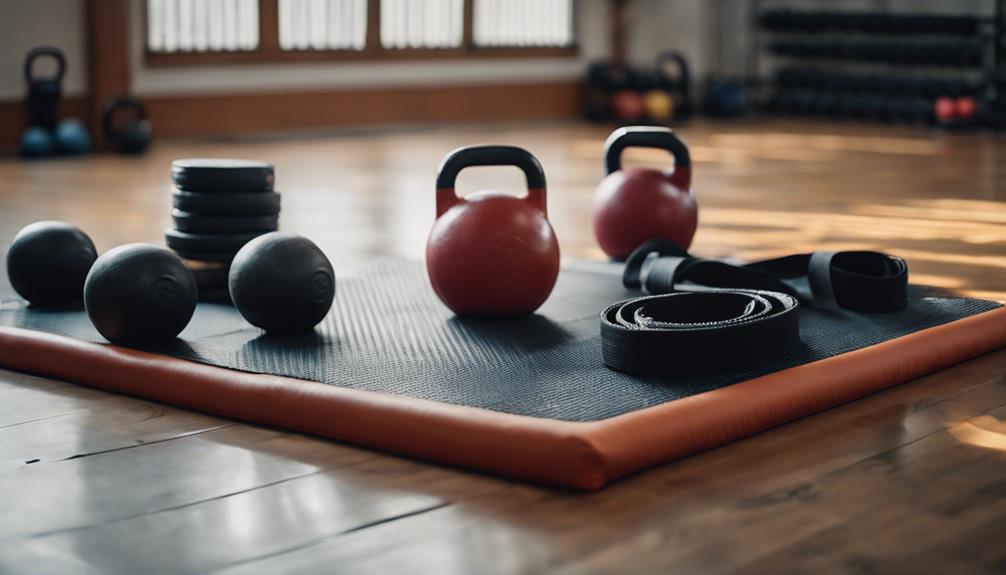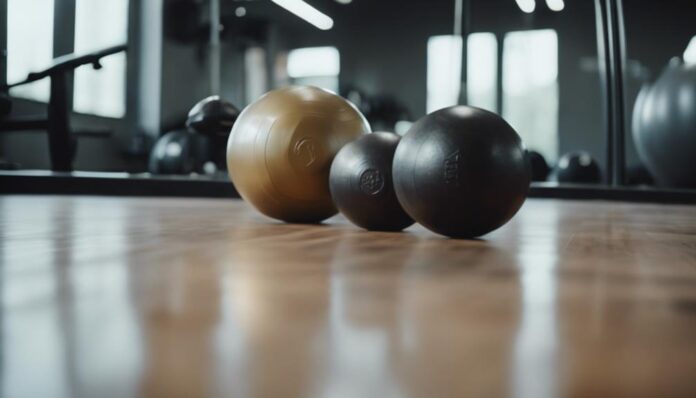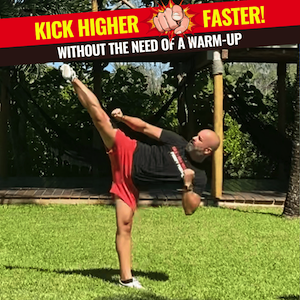To execute powerful techniques and minimize injury risk in martial arts training, you need to develop a strong core that enhances stability, balance, and force transmission in your strikes. By strengthening your abs, obliques, and lower back, you'll improve your rotational strength, striking power, and grappling effectiveness. A strong core also reduces your risk of injury by stabilizing your joints and enhancing flexibility. As you focus on building your core strength, you'll notice improvements in your technique execution and overall combat effectiveness. By exploring the right training strategies and exercises, you'll reveal the full potential of your core.
Core Strength for Martial Arts
Your core is the foundation of effective martial arts training. Developing strong core muscles, including your abs, obliques, and lower back, is essential for executing powerful techniques and maintaining control during practice.
With a strong core, you'll enhance your stability and balance, allowing you to transmit force from the ground to your strikes more efficiently. This, in turn, improves your overall combat effectiveness.
Engaging in core strengthening exercises can greatly reduce the risk of injuries by stabilizing your joints and enhancing muscular flexibility. By incorporating specific exercises, such as planks and medicine ball twists, into your training routine, you'll see measurable improvements in your striking power and defensive capabilities.
Effective core training directly correlates with improved technique execution, allowing you to absorb impacts better and perform complex movements with precision.
Injury Prevention Strategies
As you incorporate core strengthening exercises into your martial arts training regimen, you'll greatly reduce your risk of injury.
By targeting the muscle groups used in specific martial arts movements, you'll improve your technique and minimize the likelihood of strains and sprains.
To take your injury prevention strategy to the next level, you'll want to focus on exercises that enhance balance, stability, and overall core strength.
Core Strengthening Exercises
Through the incorporation of targeted exercises, martial artists can develop a strong, stable core that enhances overall physical resilience and reduces the risk of injury. Core strengthening exercises, such as planks and medicine ball twists, improve stability and reduce the risk of injuries by supporting proper body mechanics during martial arts movements.
You'll also benefit from dynamic core exercises like V-ups and flutter kicks, which enhance muscle coordination and functional strength vital for executing techniques effectively and safely.
To take your core training to the next level, incorporate progressive overload techniques, such as increasing resistance in weighted exercises, to promote muscular balance and stability fundamental for injury prevention. Regular core conditioning routines not only bolster core strength but also facilitate better impact absorption, greatly lowering the likelihood of lower back injuries during intense training sessions.
Utilize functional movements like deadlifts and squats in your core workouts to mimic real combat actions, ensuring you're well-prepared and less prone to injuries during practice and competition. By incorporating these core strengthening exercises into your training regimen, you'll develop a strong core that enhances your overall martial arts performance and reduces the risk of injury.
Training Injury Prevention
Effective core strengthening exercises lay the groundwork for injury prevention, but they're only one piece of the puzzle. To prevent injuries in martial arts training, you need to incorporate a thorough approach that includes strength training, functional training, and smart training practices.
By enhancing muscular strength and flexibility through strength training, you'll greatly reduce the risk of injuries by stabilizing joints and muscles.
Functional training prepares your body for specific combat movements, allowing for better performance and lower injury rates during techniques and sparring.
It's crucial to prioritize recovery strategies, such as active recovery methods like stretching and foam rolling, to alleviate soreness and support muscle repair.
Gradually progress in training intensity and load, focusing on proper technique, to minimize the chances of overuse injuries and promote safe adaptations in strength and skill.
By combining strength and technical skill development, you'll foster a well-rounded approach that enhances overall safety and performance in martial arts training.
Effective Core Strengthening Exercises
To effectively strengthen your core for martial arts training, you'll focus on exercises that enhance stability, strength, and dynamic movement.
You'll learn to safely perform and progress core strength exercises, such as planks, V-ups, and medicine ball exercises, to improve your overall performance.
Core Strength Exercises
Building a strong core is fundamental for excelling in martial arts training, and it all starts with incorporating the right exercises into your routine. To develop core strength, you need to focus on exercises that target your entire core, including your lower back, obliques, and abdominal muscles.
Planks, including variations like side and dolphin planks, are crucial for building core stability and endurance, which are essential for executing martial arts techniques effectively.
You also need to incorporate dynamic movements like medicine ball Russian twists and V-ups, which enhance rotational power, important for strikes and grappling maneuvers.
Leg raises and their variations, such as hanging leg raises, target the lower abdominal muscles, improving core strength and stability necessary for absorbing impacts during training.
Advanced exercises like tuck-ups and hollow rocks promote explosive core engagement, resulting in improved balance and power transfer during combat movements.
By consistently practicing these core exercises with proper technique, you'll not only strengthen your muscles but also reduce the risk of injuries by stabilizing your spine and enhancing overall body mechanics.
This is key to preventing injuries and building a strong foundation for martial arts training.
Training Safety Tips
Your core training routine is only as strong as the safety precautions you take to prevent injuries. To guarantee a safe and effective core strengthening experience, prioritize proper technique during exercises like planks and crunches. Incorrect form can lead to strain, so it's vital to focus on precise execution.
Gradually increase resistance or difficulty in your core workouts to encourage progressive overload without risking injury, allowing your muscles to adapt safely over time.
Incorporate a well-structured warm-up and cool-down routine before and after core training sessions to enhance mobility and reduce muscle soreness. Supervise your core workouts, especially if you're a beginner, to guarantee exercises like V-Ups and hollow rocks are performed correctly and effectively.
If you have preexisting conditions or injuries, consult with a healthcare professional before starting any new exercise regimen to guarantee a safe approach to core strengthening.
Effective Workout Routine
Kickstart your core strengthening routine by incorporating a mix of exercises that target the muscles vital for stability and power in martial arts.
Begin with foundational bodyweight exercises like planks, leg raises, and Russian twists, which effectively engage your core muscles. To further enhance your training, incorporate functional movements like deadlifts and squats, which mimic real combat actions and improve overall performance.
To take your core strength to the next level, incorporate dynamic exercises that focus on explosive movements. Medicine ball throws and V-ups are excellent examples, as they enhance both core strength and explosive power, essential for striking and grappling techniques.
When performing these strength exercises, prioritize maintaining proper form to maximize effectiveness and minimize the risk of injuries. Gradually increase resistance through progressive overload to guarantee continuous improvement in core strength and prevent plateaus in your training.
Training for Optimal Performance
Achieving ideal performance in martial arts requires a strategic approach to training, with a strong emphasis on core development. You must integrate core strength exercises, such as planks and medicine ball twists, into your training routine to enhance stability and power during techniques.
Studies have shown that a strong core contributes to improved striking techniques and overall athletic performance, making it essential for combat effectiveness.
To enhance your performance, incorporate functional movements like deadlifts and squats into your core training. These exercises replicate specific martial arts movements, facilitating better muscle engagement and coordination.
Gradually increase resistance in your core workouts through progressive overload to effectively build core strength and improve resilience in martial arts training. Regular core conditioning not only prevents injuries by stabilizing muscles and joints but also promotes biomechanical efficiency, allowing for sound movement patterns and enhanced performance during fights.
Core Benefits for Martial Artists

In the pursuit of martial arts excellence, developing a strong core is paramount, as it yields numerous benefits that extend far beyond mere aesthetics.
By incorporating core strength training into your routine, you'll experience significant improvements in your overall performance and resilience. A strong core enhances stability and balance, allowing you to execute techniques with greater control and precision.
Here are just a few of the key core benefits you can expect to gain:
- Improved rotational strength: Develop the power to generate devastating strikes and grappling maneuvers with a strong, stable core.
- Enhanced stability and balance: Maintain control during dynamic movements and combat scenarios, reducing your risk of injuries.
- Increased resilience: Absorb impacts with greater efficiency, allowing you to train and compete with less fatigue and reduced risk of injury.
Enhancing Technique and Power
Your core is the engine that drives powerful strikes and efficient technique execution in martial arts. A strong core acts as the foundation for generating power in strikes, with studies showing that 50-70% of the force in punches and kicks originates from core muscles. By developing your core strength, you'll enhance your striking power and improve your overall performance.
Enhanced core strength also improves balance and stability, which are essential for executing complex martial arts techniques effectively and with precision. With a strong core, you'll be able to maintain good posture, rotate efficiently, and generate torque, resulting in more effective technique execution.
Additionally, a strong core helps absorb impacts better, reducing injury risk during training and competition. By incorporating core conditioning into your training, you'll promote sound movement patterns that decrease the likelihood of injuries caused by improper technique execution.
Functional Core Training Methods

Functional core training methods are a crucial component of a martial artist's regimen, as they effectively engage multiple muscle groups and mimic the dynamic movements encountered in real-world combat scenarios.
By incorporating exercises that mimic the movements and actions you'll encounter during a match, you'll improve your overall core strength, stability, and ability to generate force.
To maximize your core training, focus on exercises that target the core from multiple angles. Here are three effective methods to try:
- Deadlifts: Engage your entire core, including your abs, obliques, and lower back, while building overall strength and power.
- Medicine ball throws: Develop explosive power and rotational strength, essential for executing effective strikes and grappling techniques.
- Jumping oblique twists: Improve core engagement, agility, and balance, while simulating the dynamic movements encountered during combat.
Preventing Core Injuries
Core injuries can be a major setback for martial artists, sidelining them from training and competition. To minimize this risk, it's crucial to prioritize core strength training. A strong core stabilizes the spine and pelvis, greatly reducing the risk of lower back injuries during martial arts training.
Poor technique or inadequate strength often lead to core injuries, emphasizing the need for proper form in exercises such as planks and leg raises. Regular core strength training enhances flexibility and muscular balance, vital for injury prevention in dynamic martial arts movements.
Incorporating functional core exercises, like medicine ball throws and rotational movements, helps replicate the demands of martial arts, reducing injury risk during practice. Don't forget to engage in active recovery methods, such as stretching and foam rolling, to alleviate soreness and tension in the core muscles, further preventing injuries related to overuse or strain.
In Summary
Strengthening your core is vital for injury-free martial arts training. By incorporating effective core exercises into your routine, you'll enhance your technique, increase power, and reduce your risk of injury. In fact, studies show that core injuries account for up to 25% of all martial arts-related injuries. Don't become a statistic – prioritize core training to perform at your best and stay injury-free. A strong core is essential for peak performance and longevity in martial arts.



